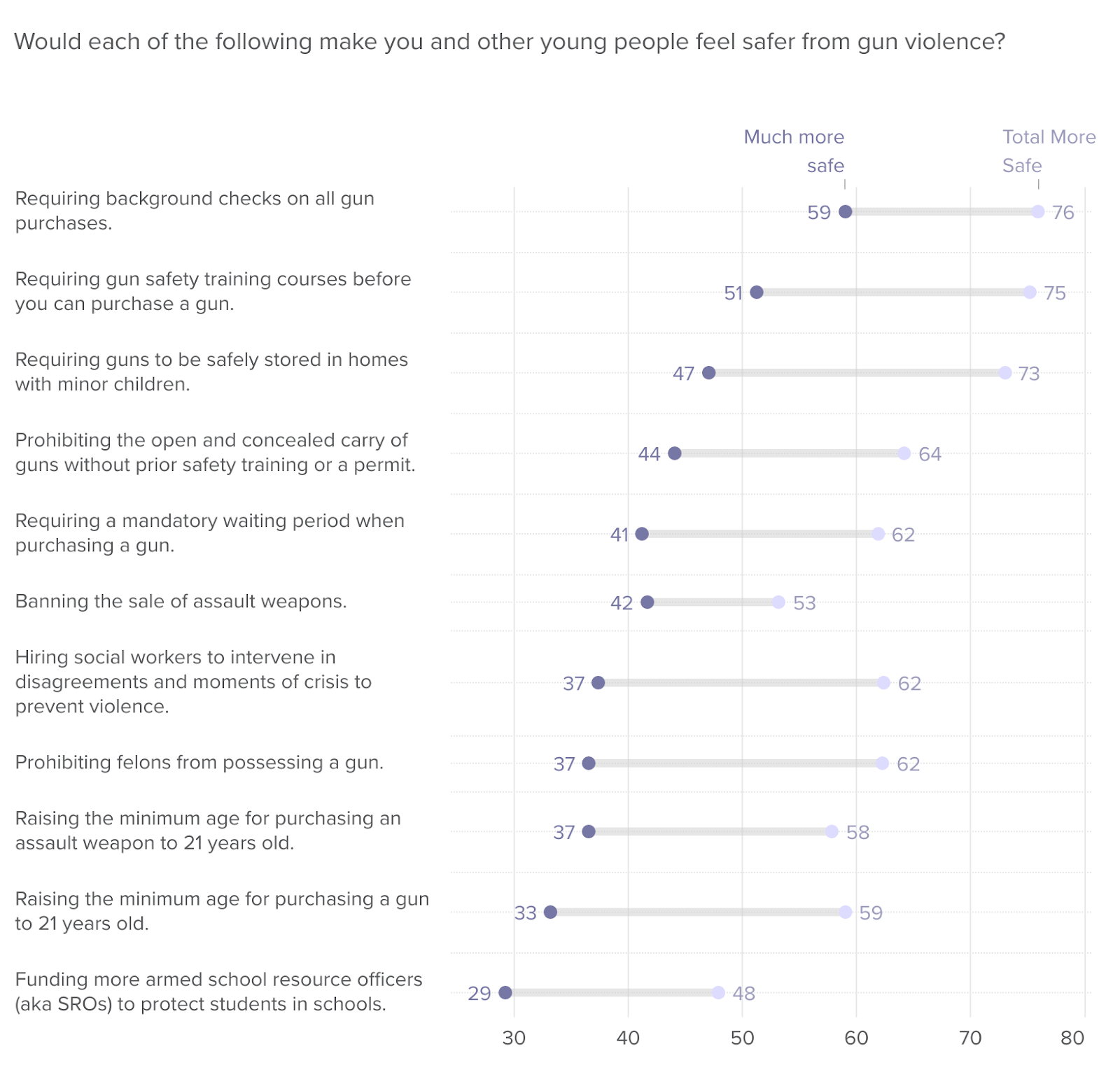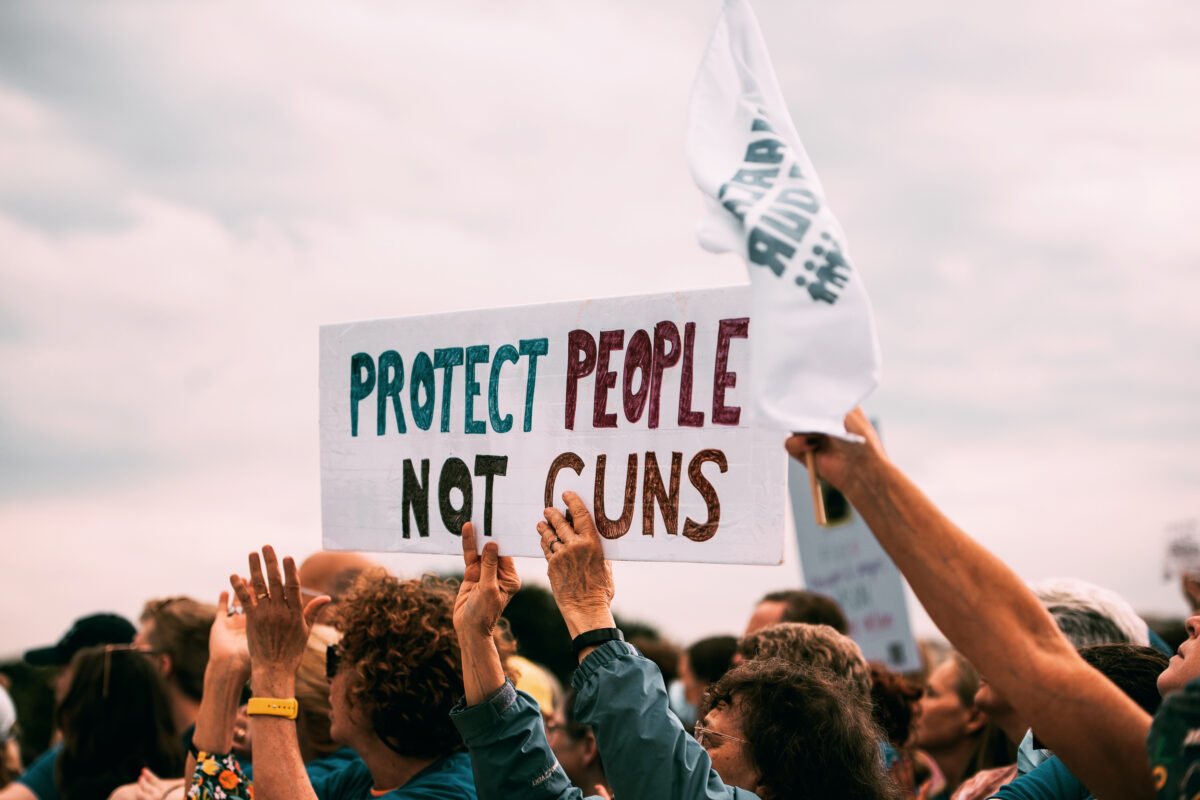2022 Midterm Poll: Gun Violence Drives Youth to Vote
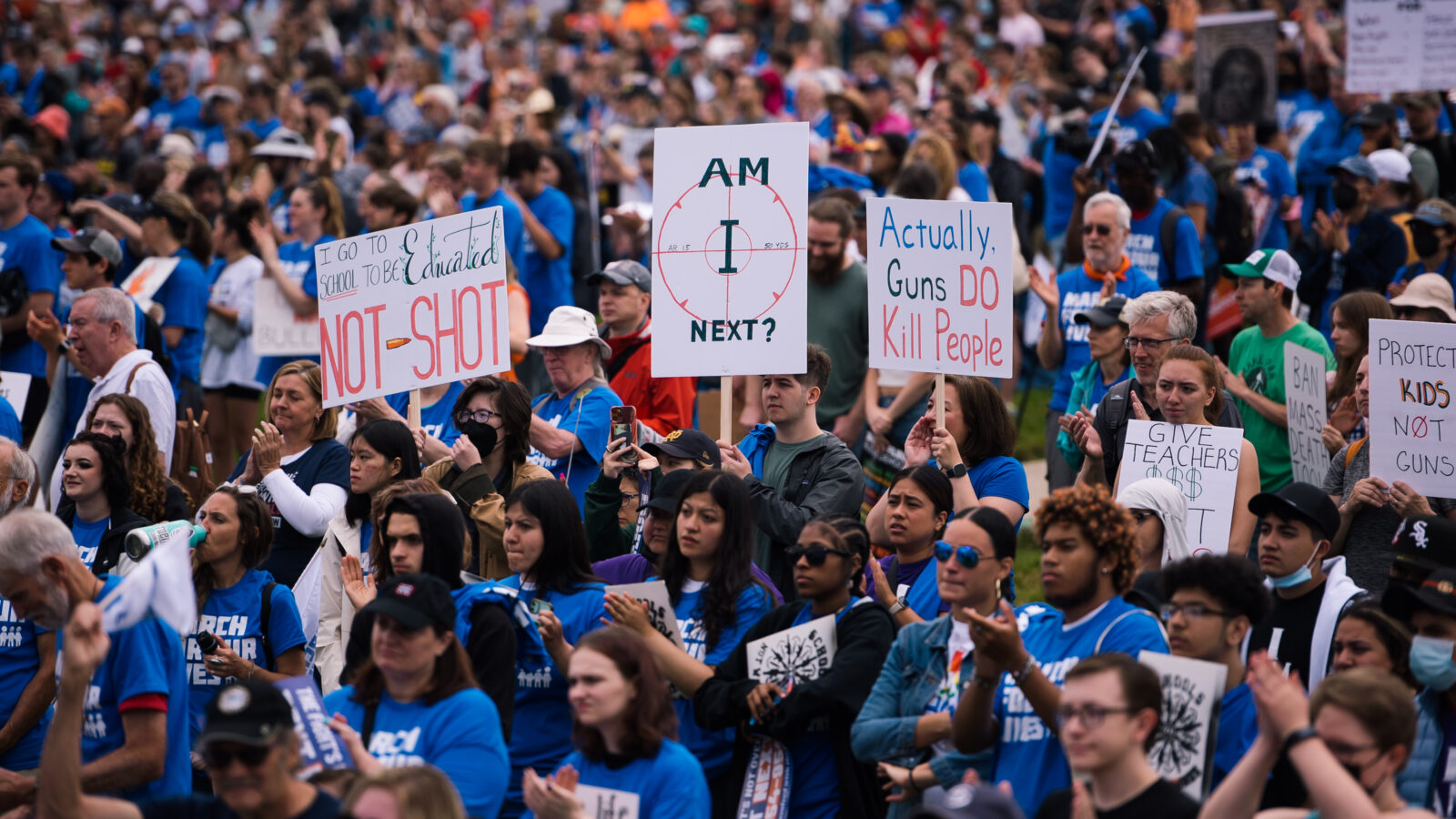
The research is in
March For Our Lives commissioned a poll by Change Research to survey the state of the field among youth voters in the lead-up to the 2022 midterms elections. In a cycle where every vote counted and where young people were once again the difference in tight elections, we wanted to find out and lift out what matters most to our generation.
Young voters fear for their safety from gun violence and mass shootings and believe they are more likely than not to experience gun violence in their lifetime. Though the Bipartisan Safer Communities Act is a step forward, most young voters believe gun laws in America are still not restrictive enough and disapprove of political leaders who fail to be bold enough in their efforts to stop gun deaths. Young voters say a number of changes would make them feel safer from gun violence, and the more bold a candidate’s stances are in their proposals to curb gun violence, the more likely young voters are to support them electorally.
These are the key findings from a new national survey of 811 likely voters under the age of 35 conducted for March For Our Lives by Change Research from October 28-31, 2022. This is critical information for campaigns as young voters are more likely than others in the March For Our Lives coalition to vote on Election Day.
Here are the toplines for voters under 35:
53%
of voters reported that they worry about their safety from gun violence
57%
will support a candidate who wants to pass background checks
26%
of voters under 35 trust Republicans to handle gun laws
Gun Violence is a Top Priority as Young Voters Routinely Fear for Their Own Safety.
Gun violence and mass shootings are now routine personal concerns for young voters. A 53% majority of voters under 35 report they frequently or occasionally worry about their personal safety from gun violence, and as many (52%) worry about their safety from a mass shooting. Fear of a mass shooting is even higher among young voters that are currently in school (62%). Concerns are significantly higher among young women than men: 64% of young women worry frequently/occasionally about their personal safety from both gun violence and mass shootings.
For many young voters, it is less a matter of if they will be a victim of gun violence bet when. Seventy percent believe there is at least a 50% chance that they will be a victim of gun violence, including 13% who report already experiencing gun violence. A 54% majority say there is at least a 50% chance that they will be a victim of a mass shooting. This deep and consistent concern for their physical safety is the context in which young voters judge elected leaders and their legislative priorities.
Quick Facts About Young Voters:
70%
believe there’s at least a 50% chance they’ll be a victim of gun violence
54%
believe there’s chance that they will be a victim of a mass shooting
52%
said having an armed police officer on campus does NOT make them feel safe
Young Voters Are More Disillusioned with Congress on Gun Safety Than Other Issues
Despite the Bipartisan Safer Communities Act, only 37% of voters under 35 believe that Democrats in Congress have worked to make things better when it relates to gun violence and mass shootings, which includes just 60% of those young voters who intend to support Democratic candidates this year. In fact, while young voters are generally negative in their assessments of how Biden and Democrats are handling issues, the area where they are least satisfied is our nation’s gun laws. Only 37% of all young voters, including 42% of Democrats and 75% of pure independents, approve of how Biden and Democrats are handling gun laws.
They are even less likely to say that Republicans in Congress have worked to make things better (18%), 60% say that the GOP has worked to make things worse, and only 26% trust Republicans to handle gun laws. The reason for the trust deficit with Democrats is they fail to go far enough. Six-in-ten young voters believe our leaders in Congress need to be more bold when it comes to addressing the gun crisis (versus just 32% who say they are being too bold).
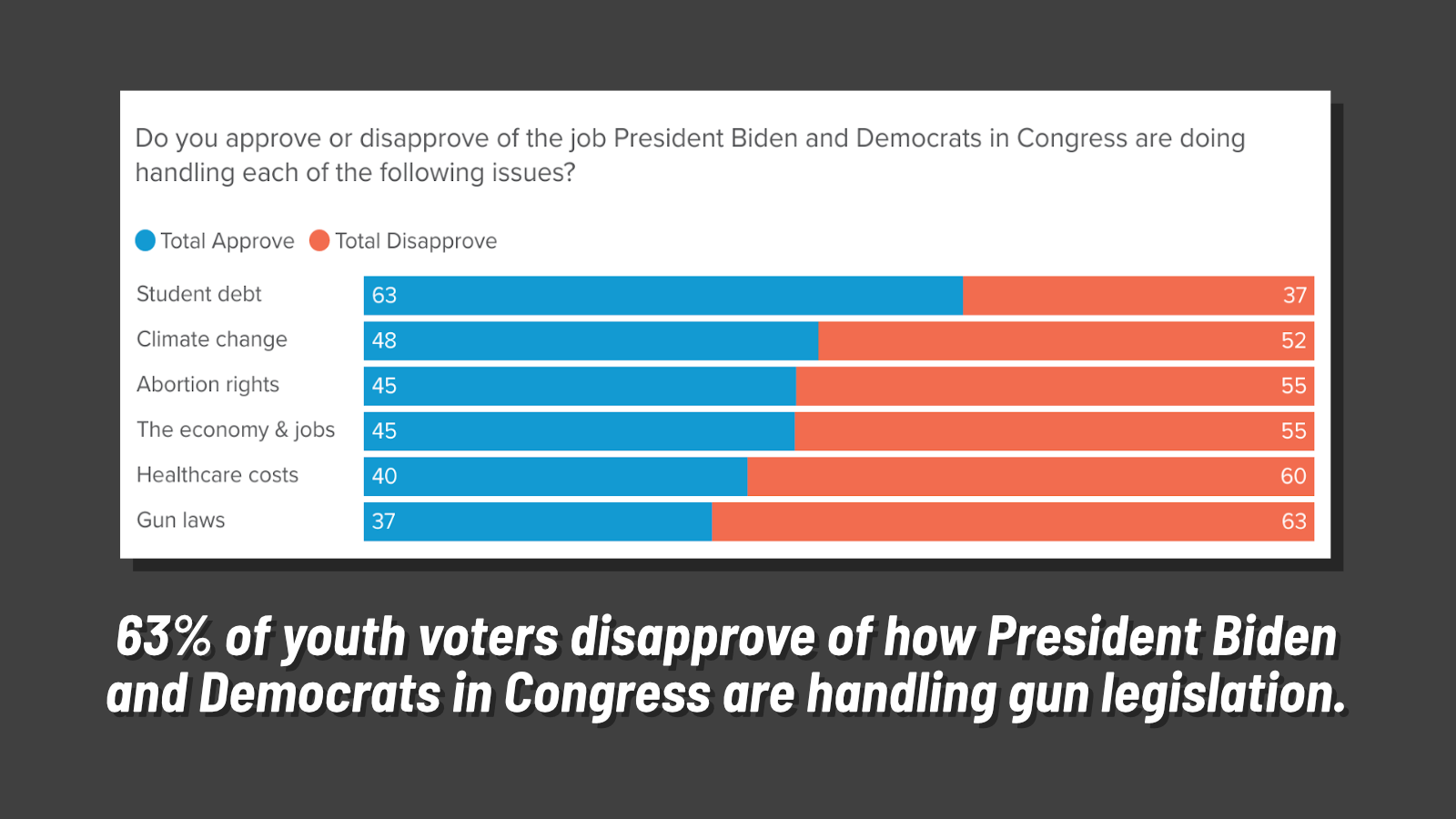
More Facts About Young Voters
37%
approve of how Biden and Democrats are handling gun laws
6/10
believe leaders need to be more bold in addressing the gun crisis
26%
of voters under 35, trust Republicans to handle gun laws
The More Bold Lawmakers Are Addressing Gun Violence, the Greater the Reward
The more ambitious a candidate’s gun policies, the more likely young voters are to support them.
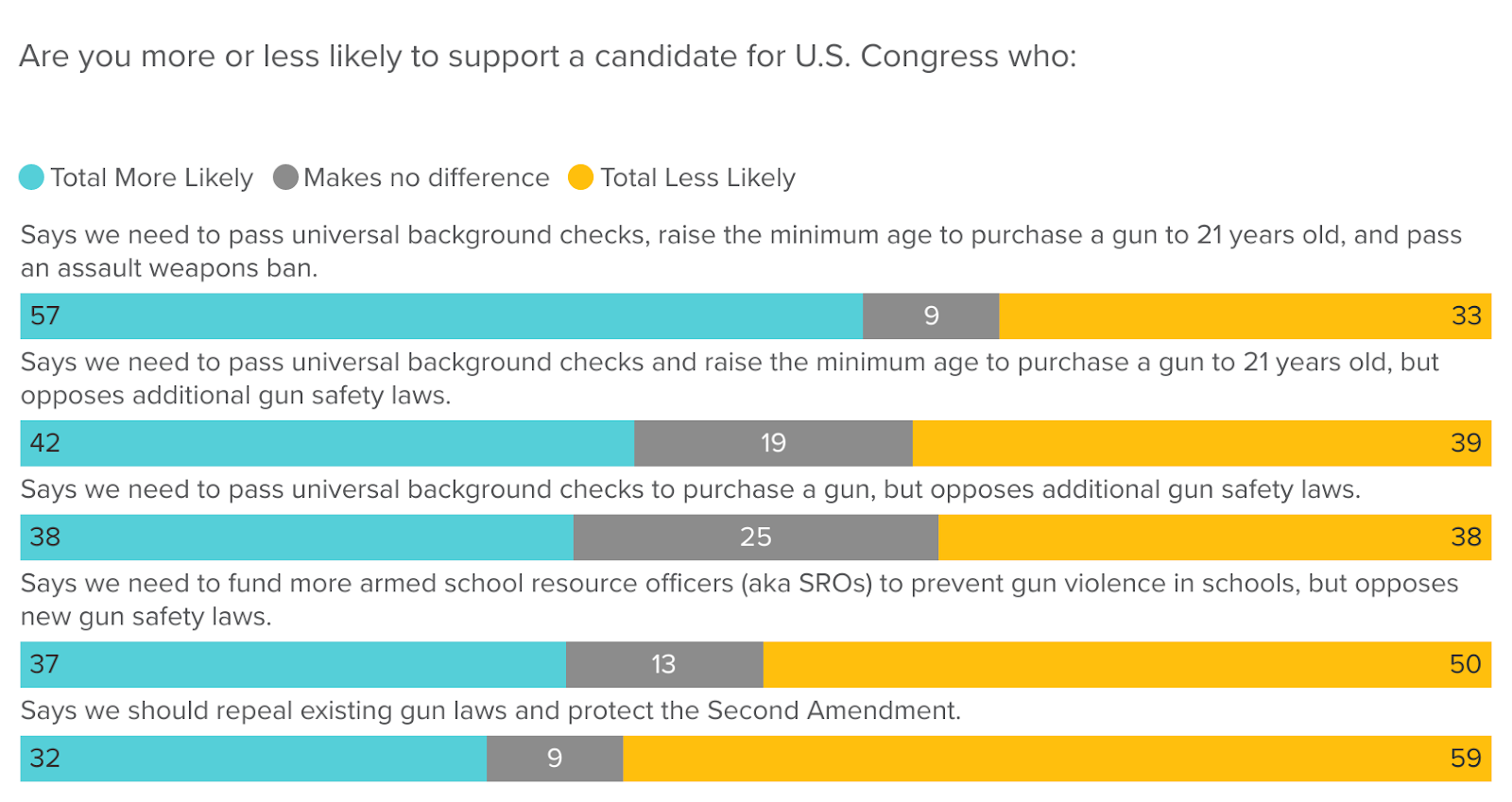
On balance, young voters are net less likely to support a candidate who says we need to fund more armed school resource officers but opposes other gun safety measures. There was also not a net benefit to a candidate who only supports universal background checks but does not support other gun safety measures (38% more likely, 38% less likely) or a candidate who supports universal background checks and raising the minimum age to purchase a gun to 21-year-olds but opposes additional measures (42% more likely, 39% less likely). But a 57% majority are more likely to support a candidate who wants to pass background checks, raise the age to buy a gun to 21 and pass an assault weapons ban (versus just 33% less likely), and a large 42% say they are much more likely to support such a candidate.
In order to reach the disillusioned young voters still on the table in these last days of the campaign, candidates should lean heavily into bold plans to curb gun violence with their communications to voters under 35. With that being said, majorities said that they and other young people would feel safer if each of the proposals to address gun safety tested in this poll were passed, with the exception of funding more armed school resource officers (48% safer).
